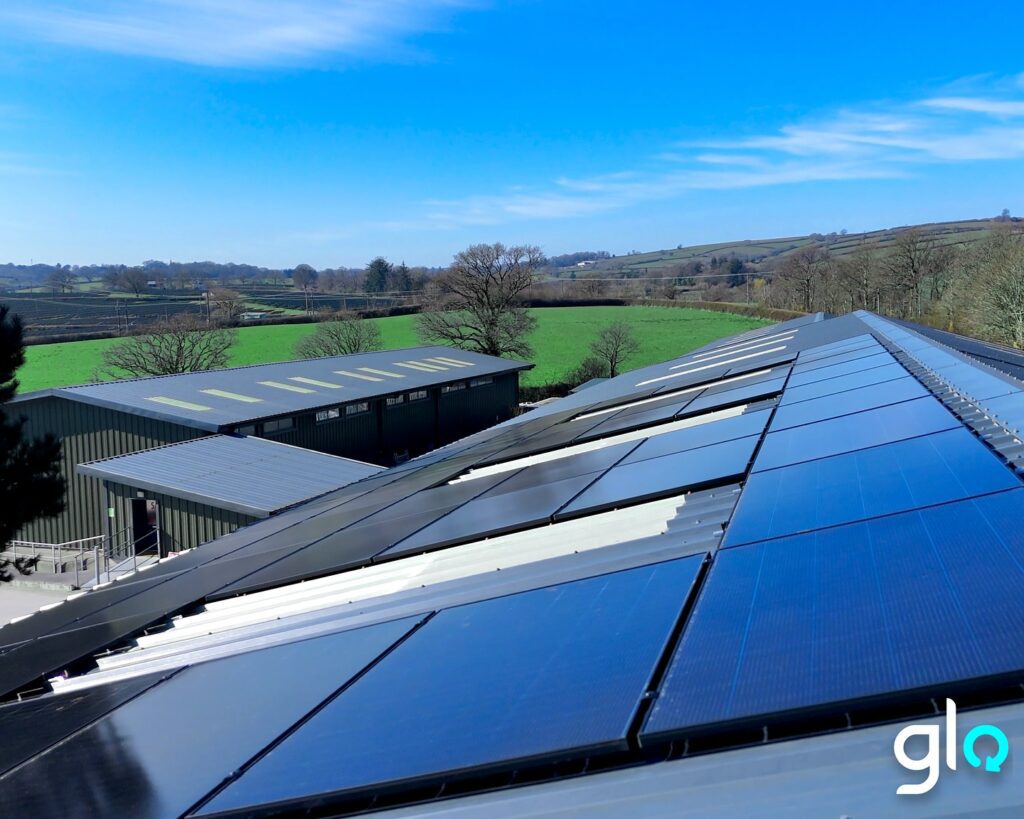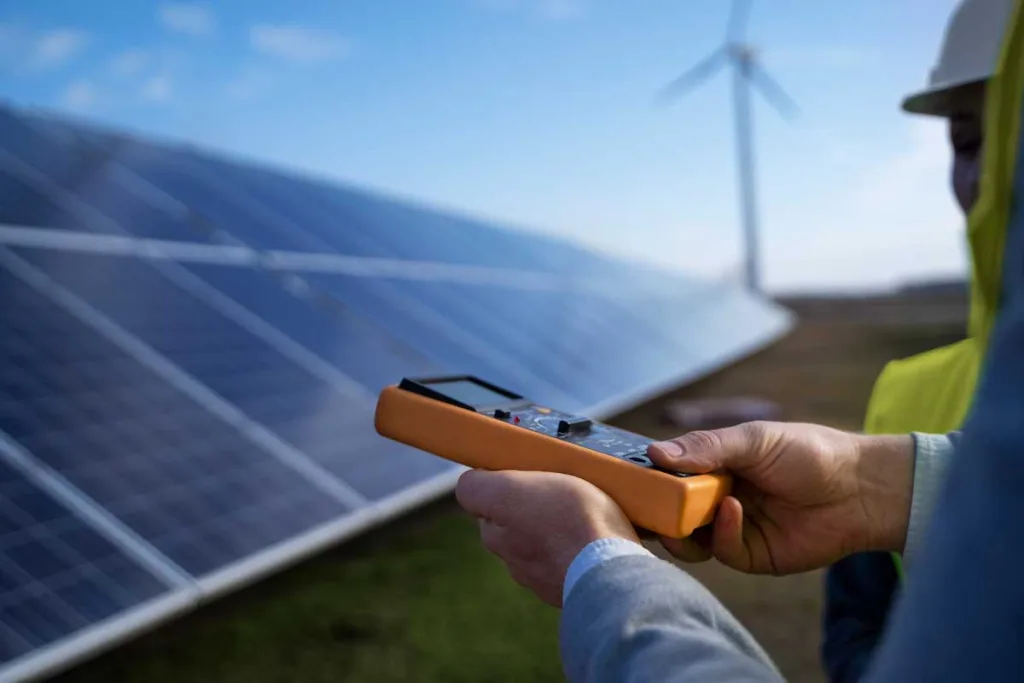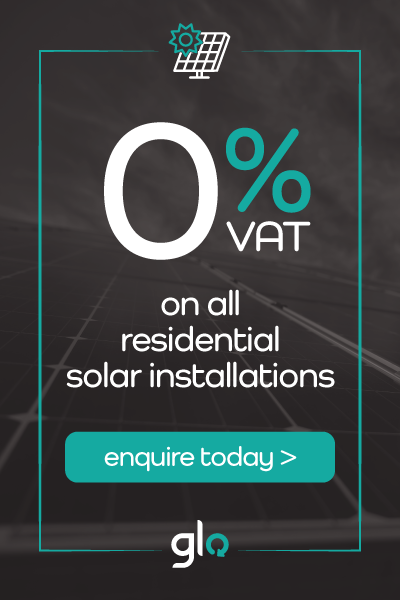What is a solar farm and how does it work?
Solar Panels for Farms: A solar farm represents a large-scale photovoltaic power station designed specifically for supplying merchant power to the electricity grid. Unlike rooftop solar systems that typically power individual homes or businesses, solar farms operate as power plants, generating electricity at the utility level.
Definition and components of a solar farm
Solar farms, also known as solar parks or solar power plants, consist of numerous photovoltaic panels arranged across extensive areas of land. These installations vary considerably in size, from modest setups requiring just a few acres to substantial operations spanning hundreds of acres. Most solar parks are developed at a scale of at least 1 MWp, with the world’s largest operating photovoltaic power stations now exceeding 1 gigawatt in capacity.
The panels themselves are just one part of the system. Solar farms incorporate several essential components, including inverters that convert the sun’s base energy (DC) into usable AC electricity, racking and mounting systems to position panels optimally, electrical infrastructure for safe power transfer, and sophisticated monitoring systems for maintenance and performance tracking.

How solar panels generate electricity
The electricity generation process starts when sunlight strikes the photovoltaic cells within solar panels. These cells, typically made from semiconductor materials like silicon, contain electrons that become dislodged upon absorbing solar energy. When these electrons move, they create an electrical imbalance between the front and back surfaces of the PV cell, establishing a voltage potential similar to battery terminals.
Electrical conductors on the PV cell capture these electrons, creating direct current (DC) electricity. Since most homes and businesses use alternating current (AC), inverters must convert the DC electricity before it can power standard appliances or feed into the grid. This converted electricity can then be distributed through the power grid to homes and businesses.
Difference between solar farms and agrivoltaics
The key distinction between traditional solar farms and agrivoltaics lies in their approach to land use. Conventional solar farms dedicate land exclusively to energy production, potentially displacing agricultural activities. Agrivoltaics takes a different approach, integrating solar panels within existing farms and allowing crops to grow underneath the panels.
This dual-use approach offers several advantages. Research suggests certain crops may benefit from the partial shade provided by solar panels in agrivoltaic systems, potentially increasing yields and improving crop quality. The shade from panels can also reduce water evaporation from soil, enhancing water management.
However, there are trade-offs to consider. Traditional solar farms can optimise panel placement for maximum energy capture, potentially generating more electricity per unit area. Agrivoltaics maximises overall land use efficiency by maintaining agricultural production alongside energy generation.

Why solar panels are better for farms in 2025
Farmers across the UK are discovering that solar technology offers practical solutions to multiple operational challenges. The shift toward agricultural solar adoption stems from compelling benefits that extend well beyond simple energy generation.
Lower operational costs
Solar panel costs have dropped by 90% over the past decade, making solar one of the most affordable energy sources available. Farming operations that switch to solar energy see substantial reductions in energy costs through reduced dependence on traditional power sources. A typical 100kW system, perfect for medium to large arable farms, can generate over 90,000 kWh annually, potentially saving £15,000–£20,000 per year. Most systems pay for themselves within 3-5 years, with some installations delivering returns exceeding 20% annually.
Energy independence and resilience
Generating electricity on-site gives farms valuable protection from external energy disruptions and price volatility. This independence proves particularly beneficial for operations requiring a consistent power supply, such as dairy farms with milking machines or facilities with climate control systems. Solar panels paired with battery storage ensure continuous power during grid outages, a crucial advantage when protecting livestock or maintaining irrigation systems. This self-sufficiency allows farmers to lock in electricity rates for up to three decades, creating budget predictability despite market fluctuations.
Reduced carbon footprint
Agriculture faces growing pressure to reduce emissions, and solar installations provide a clear path to sustainability. Switching to solar helps farms significantly lower their greenhouse gas output whilst supporting the UK’s goal of achieving net-zero emissions by 2050. Solar-powered systems produce clean energy without harmful pollutants, addressing climate change concerns whilst simultaneously supporting farmers’ incomes.
Better land use with solar panels in fields
Modern agrivoltaic systems excel at maximising land productivity. These innovative setups can increase overall land use efficiency by up to 186% compared to using land separately for farming and solar energy. Solar panels on farmland can increase farm income by up to 30% through dual land use. The panels provide additional benefits by moderating soil temperature, increasing it by up to 7°C during cold periods and decreasing it by up to 6°C during warm periods. These systems can reduce water requirements by up to 30% through decreased evaporation.

Getting started with solar panels on farms
Proper assessment of your property forms the foundation for successful solar installation, ensuring optimal system performance over its 25-30 year lifespan.
Assessing roof space and field layout
Start by evaluating your farm buildings’ structural integrity. Older roofs may need reinforcement to support the additional weight of 20-30 kg per panel. South-facing roofs capture the most sunlight in the UK, though east or west-facing orientations can still perform effectively. A roof of approximately 500 square metres can accommodate a 50kW solar system. Farms with limited roof options should examine field areas with unobstructed sun exposure.
Choosing between rooftop and ground-mounted systems
Rooftop systems make use of otherwise unused space and work with existing structural support, often resulting in more cost-effective installation. Ground-mounted panels offer greater flexibility in positioning. These systems can be angled precisely for maximum efficiency and operate at lower temperatures than roof-mounted equivalents, potentially delivering up to 25% more efficiency. Ground-mounted options require approximately 1.6 hectares (4 acres) per MW of capacity, making them suitable for farms with ample available land.
Planning permission and grid connection
Rooftop installations on agricultural buildings may qualify as permitted development without planning permission if they project no more than 200mm from the roof slope and remain within specific placement guidelines. Ground-mounted systems typically require formal planning permission. Applications should include location plans, site layouts, elevations, and supporting statements.
Setting up a solar farm in the UK
Once approval is secured, engage with National Grid or Distribution Network Operators to secure grid connection. This process involves an initial offer and follow-up meetings to establish connection plans, typically taking around 12 months. Conduct an energy audit to determine your farm’s current and projected electricity needs. Consider self-consumption optimisation rather than solely focusing on selling surplus energy, as this typically yields better financial returns.
Funding and support for farm solar projects
Financial support for your agricultural solar installation can dramatically reduce upfront costs. The UK government has developed dedicated funding schemes specifically to help farmers transition to renewable energy systems.
Overview of solar panel farm grants UK
The Rural Payments Agency (RPA) administers the Improving Farm Productivity Grant, which provides essential financial assistance for solar projects. This programme offers funding between £15,000 and £100,000 per application. The grant covers 25% of the capital costs for eligible solar equipment, requiring a minimum project cost of £60,000. If you wish to apply for both solar and farm productivity grants, two separate applications must be submitted, with a maximum combined grant of £500,000 per business.
.
How to apply for grants for solar panels for farms
The application process works through two distinct stages. First, complete the online eligibility checker, where the RPA assesses your project against funding priorities. Smaller-scale rooftop systems with battery storage on smaller farms appear to have higher success rates. Once you pass this initial assessment, you’ll receive an invitation to submit a full application with your assigned project number. The RPA aims to provide decisions within 60 working days of receiving complete applications.
Tips for successful applications
A compelling grant proposal should clearly articulate your project’s objectives, benefits, and sustainability aspects. Demonstrate community support through partnerships with local businesses or educational institutions. Present a realistic budget outlining all expected costs, and include a detailed project timeline showing key milestones. Professional guidance can help you navigate application complexities and avoid common pitfalls.
Conclusion
Solar panels have established themselves as a practical solution for UK farms entering 2025. The substantial cost reductions over recent years make solar technology both environmentally responsible and financially sensible. With proven payback periods and ongoing savings, your farm can build a more sustainable and cost-effective energy future.
Agrivoltaic systems demonstrate how innovation can enhance rather than compromise farming operations. The ability to maintain productive agriculture whilst generating clean energy creates opportunities that traditional farming alone cannot match. This approach shields your business from unpredictable energy costs whilst contributing to environmental goals.
Government support through the Improving Farm Productivity Grant recognises the value of agricultural solar adoption. Rooftop installations on farm buildings benefit from streamlined planning processes, making implementation more straightforward than many farmers initially expect.
Farming has always required resilience against unpredictable conditions. Solar technology adds another layer of protection to your operation. Battery storage systems provide security during power disruptions, ensuring your essential systems continue operating when you need them most.
The transition to solar represents more than just an energy decision, it’s an investment in your farm’s long-term viability. Early adopters will benefit from reduced operational costs and stronger sustainability credentials as energy markets continue evolving. While the initial planning may seem daunting, the combination of financial, environmental, and operational advantages makes solar increasingly vital for progressive UK farming operations.
Key Takeaways
Solar panels are transforming UK agriculture by offering farmers a path to energy independence, cost savings, and enhanced sustainability whilst maintaining productive farming operations.
• Solar farms can achieve 140% land efficiency through agrivoltaics, maintaining 70% crop yields whilst generating 70% of standard solar output on the same land.
• UK farmers can save £15,000-£20,000 annually with 100kW systems, achieving payback within 3-5 years and returns exceeding 20%.
• The Improving Farm Productivity Grant covers 25% of solar equipment costs (£15,000-£100,000), making installations more financially accessible.
• Agrivoltaic systems reduce water requirements by 30% and moderate soil temperatures, creating better growing conditions for crops.
• Solar installations provide energy independence and grid resilience, protecting farms from power outages and volatile electricity prices for up to 30 years.
With solar panel costs having fallen 90% over the past decade and government grants available, 2025 presents an optimal opportunity for UK farmers to transition to renewable energy whilst maintaining agricultural productivity and building long-term operational resilience.
How Glo Renewables Can Help Farms
Installing solar panels on your farm doesn’t have to be complicated, and with Glo Renewables, it isn’t.
We’ve worked with farmers across Devon to plan, design, and install high-performing solar PV systems that deliver real savings and long-term energy resilience. Whether you’re just starting to explore the idea or already pricing up your options, our team is here to guide you every step of the way.
Expert Advice – We’ll assess your site, run feasibility checks, and explain the pros and cons of roof-mounted vs. ground-mounted systems in plain English.
Planning Support – From permitted development to full planning applications, we’ll help you navigate local regulations and grid connection requirements.
Grant Guidance – Unsure about funding? We’ll walk you through available solar grants for farms and help strengthen your application.
End-to-End Installation – Once approved, we handle everything, from panel supply to system monitoring, with minimal disruption to your daily operations.
If you’re ready to reduce your energy bills and future-proof your farm, Glo Renewables is the partner you can trust.
Frequently Asked Questions about Solar Panels for Farms In Devon
How do solar panels benefit farms compared to traditional energy sources?
Solar panels offer farms energy independence, significant cost savings, and reduced carbon emissions. They can save farmers £15,000-£20,000 annually on energy costs, with systems typically paying for themselves within 3-5 years. Additionally, solar panels help farms become more resilient to power outages and energy price fluctuations.
What is agrivoltaics and how does it improve land use efficiency?
Agrivoltaics is the practise of combining solar panels with agriculture on the same land. This approach can increase overall land use efficiency by up to 186% compared to separate farming and solar energy production. It allows for maintaining about 70% of crop yields while simultaneously generating 70% of standard solar output, effectively creating 140% land usage efficiency.
Are there any grants available for UK farmers to install solar panels?
Yes, the UK government offers the Improving Farm Productivity Grant for farmers. This grant covers 25% of eligible solar equipment costs, with funding ranging from £15,000 to £100,000 per application. The grant is specifically for solar panels installed on farm building rooftops or irrigation reservoirs.
How do solar panels impact crop growth and water usage?
Solar panels can actually benefit crop growth by moderating soil temperatures. They can increase soil temperature by up to 7°C during cold periods and decrease it by up to 6°C during warm periods. Additionally, solar panel systems can reduce water requirements for crops by up to 30% through decreased evaporation.
What are the environmental benefits of using solar energy on farms?
Solar energy significantly reduces a farm’s carbon footprint by generating clean, renewable electricity without harmful pollutants. This helps farms contribute to the UK’s goal of achieving net-zero emissions by 2050. Solar panels also promote sustainable farming practices and can enhance a farm’s environmental credentials.
Can I install solar panels on agricultural land?
Yes – if you have suitable agricultural land, it can be an ideal location for a ground-mounted solar PV system. These systems allow you to generate renewable energy without impacting your primary farming activities. Agrivoltaics even lets you continue growing crops or grazing livestock underneath the panels, making efficient dual use of the land.
How much can solar panels reduce my electricity costs?
Installing a solar PV system can reduce your electricity costs by up to 70%, depending on your usage and system size. For many farms, this means saving tens of thousands of pounds annually. With energy prices continuing to rise, solar offers long-term protection against unpredictable market rates.
What type of solar PV system is best for farms?
That depends on your farm’s layout. Rooftop systems work well for buildings with strong structural integrity and sun exposure, while a ground mounted solar PV system may be better suited to farms with available field space. Our team at Glo Renewables will assess your site and recommend the most efficient setup for maximum energy savings.
How does solar benefit the agricultural sector as a whole?
The agricultural sector is under pressure to reduce emissions, cut costs, and improve sustainability. Solar energy helps farms meet these goals by providing clean power, improving energy resilience, and generating extra income. Widespread solar adoption across UK farms could transform how the sector manages energy in the face of rising demand and climate change.
Can I use ground mounted solar panels if I don’t have strong farm buildings?
Absolutely. A ground mounted solar PV system is a smart option for farms with limited roof space or older buildings. These systems can be installed on unused patches of agricultural land, with custom angles to capture maximum sunlight. They’re also easier to clean and maintain, and can outperform roof systems by up to 25% in efficiency.
Will solar help me manage my farm’s energy bills over time?
Yes – solar gives you long-term control over your energy bills. By generating your own electricity, you reduce reliance on external suppliers and avoid sudden cost hikes. With smart usage and optional battery storage, many farms can lock in consistent energy costs for 25–30 years.
How soon will I see energy savings after installation?
Most farmers begin seeing energy savings from day one. A typical solar installation starts offsetting your electricity costs as soon as it’s connected to your supply. With performance monitoring included, you’ll clearly see how much you’re generating and saving each month.


![Why Solar Panels for Farms In Devon Are Better Than Traditional Energy [2025 Guide]](https://glo-renewables.co.uk/storage/2025/08/Why-Solar-Panels-for-Farms-In-Devon-Are-Better-Than-Traditional-Energy-2025-Guide.jpg)



